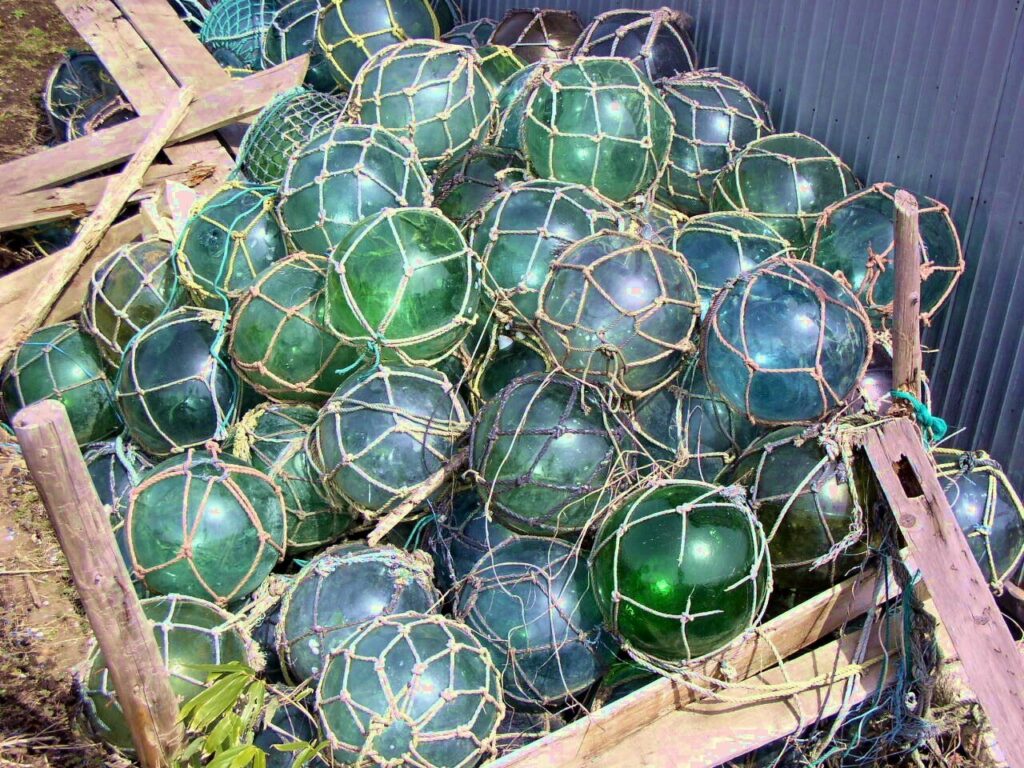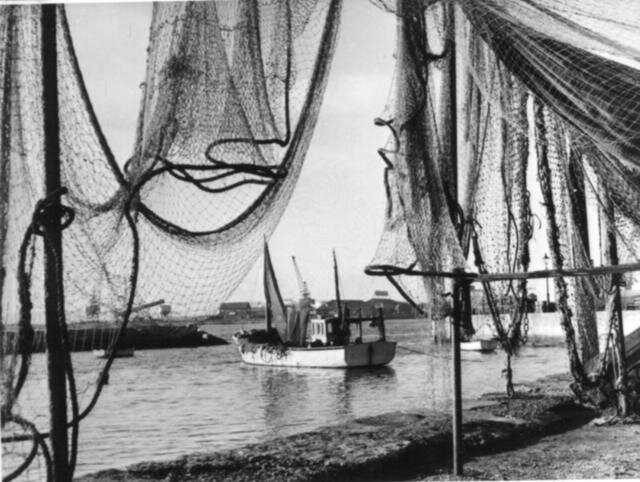Glass Fishing Floats
From a fisherman's tool to a beachcomber's treasure!
From: Poole Museum
These days you might see balls of glass like these elaborately tied up in rope and hung in cafes, shops, and arcades along Poole Quay. Although now serve a decorative purpose, they were originally a vital tool for fishermen to keep their nets and lines afloat.



